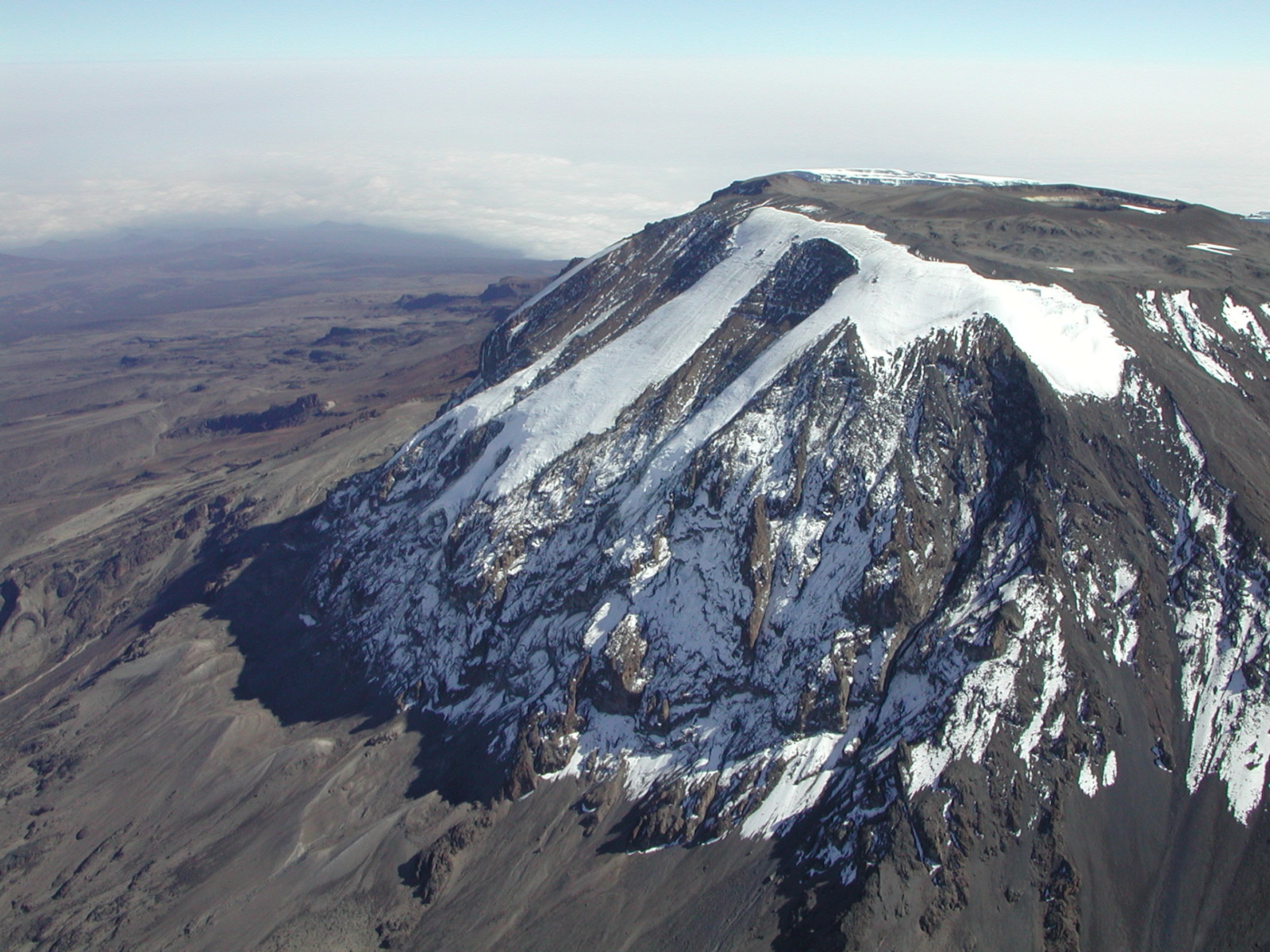Tropical cyclones are an important part of the weather in the southwest Indian Ocean each year, from November through April. These storms can cause massive destruction and loss of life when they make landfall, which happens most often on the islands of Mauritius and Madagascar and the coastal region of Mozambique. However, until recently, relatively little was known about their impacts on the high-mountain areas of East Africa and the small glaciers in those regions.
When you think of glaciers, East Africa probably isn’t the first place that springs to mind. But there are a number of small glaciers in this region, including on Kilimanjaro, Africa’s highest mountain, which have been studied in detail over the past two decades (a nice summary is available here). Because few other measurements are available at the altitude of glaciers in East Africa (~ 5 to 6 km above sea level), the atmospheric signals recorded by the glaciers provide valuable information about climate change in this region.
Long-term natural variability in the climate system, such as the El-Niño Southern Oscillation and the Indian Ocean Dipole, is known to impact humidity and snowfall at Kilimanjaro’s summit and is therefore important for understanding glacier changes. However, we recently studied the very wet rainy season that occurred in the region at the end of 2006 and found that tropical cyclones, very intense storms that form in the tropical oceans, can also produce large amounts of snowfall on the glaciers.
Using a combination of high-resolution atmospheric modelling and weather station data, we found that tropical cyclones can influence Kilimanjaro in two ways: directly, when some storms pass close enough to the coast of East Africa to bring moisture to the region; and, indirectly, by triggering unusual winds from the west, which bring moisture from the Congo Basin to the region.
Like hurricanes in the Atlantic Ocean, tropical cyclones in the Indian Ocean are given names. One example of indirect influence occurred during cyclones Bondo and Clovis, which formed and passed close to Madagascar in rapid succession between late December 2006 and early January 2007 (Figure 1). During this period, the weather stations at the summit of Kilimanjaro measured more than 10 cm of snowfall per day on multiple days. This means that 5% of the annual total snowfall fell in just one day!

Figure 1: Atmospheric humidity (colored shading; kg m-2) and moisture transport (black vectors; kg m s-1) summed over the lower troposphere in the atmospheric model data on 23 December 2006. The green dot shows the location of Kilimanjaro, and the grey circle delineates a radius of 1000 km around the mountain. The blue circle indicates the location of tropical cyclone Bondo, while cyclone Clovis is forming further east at ~70°E. Credit: Emily Collier. A similar figure is presented in Collier et al. 2019.
In total, between 25 and 55 cm of snow fell on the glaciers on Kilimanjaro between the start of tropical cyclone Bondo and the end of cyclone Clovis, while snow depth on the crater floor increased from 0 to 56 cm! The dramatic difference in summit conditions before and after these two cyclones is shown by these “Cloud Cam” images:
The unusually deep snowpack that was created by these storms extended down the mountain to ~ 4500 m elevation and lasted for more than half a year, which insulated the glaciers from both incoming sunshine and warmth emitted by the dark ash surfaces that surround them.
You can see that a similar pattern happens a few times over the whole cyclone season:
So, the key takeaway from our study is that although these storms only last for a few days at a time, they can produce large amounts of snowfall on the glaciers and may therefore be relevant for understanding the climate signals recorded by the glaciers, for example in ice cores and retreat patterns.
It’s important to note that this research only considered one cyclone season and that not every tropical cyclone produced a detectable impact at the summit. We will need to study a longer time period to understand how much tropical cyclones have contributed to long-term glacier changes and how they impact snowfall on Kilimanjaro. However, with 12 to 13 storms forming every year on average, their potential influence is large!
More about this research:
This study was inspired by guide Nimrod Charles Kileo (“Timba”), who suggested that a better understanding and prediction of TCs could improve porter safety on Kilimanjaro. The research was done in collaboration with Doug Hardy, Thomas Mölg and Tobias Sauter.
You can read the full paper here (please contact the lead author at emily.collier@fau.de if you do not have access):
Collier et al. (2019): The Influence of Tropical Cyclones on Circulation, Moisture Transport, and Snow Accumulation at Kilimanjaro During the 2006–2007 Season, JGR Atmospheres, 124, p. 6919-6928.
Edited by Jenny Turton
Emily Collier recently finished a position as a post-doctoral researcher in the Climate System Research Group at Friedrich-Alexander University Erlangen-Nürnberg (FAU) in Germany. Her research is focused on atmosphere-glacier interactions in mountainous regions.



